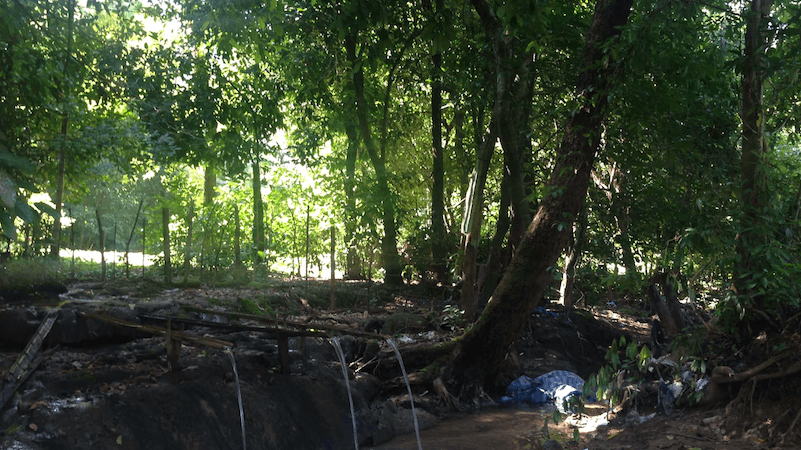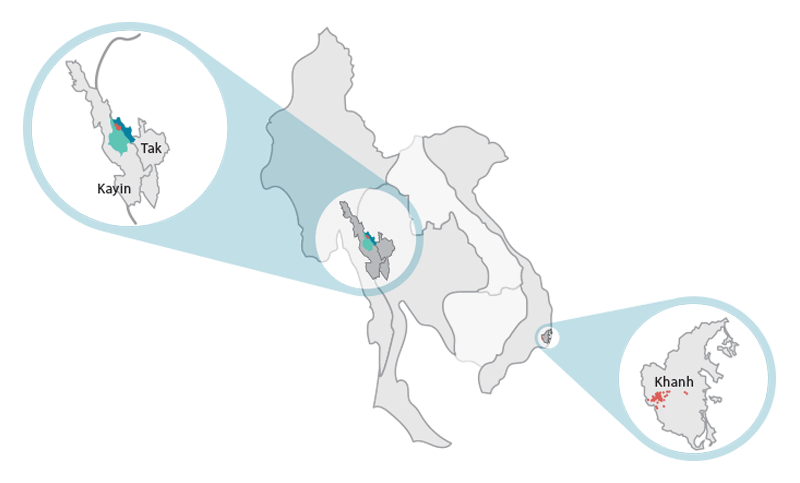Research Sites

The research sites
In this study, ongoing malaria transmission was studied across different ecological settings, namely village, farm and forest. The communities selected were those that practise subsistence farming, have dual residence between villages and farm huts, or have a substantial population that travels into forested regions. Selection of study sites also took into account a number of other factors relevant to the research, including the coverage of long-lasting insecticidal nets (LLINs) and/or indoor residual spraying (IRS).
.png)
Thailand study sites
Suan Oi village, Pha Man village and Komonae village (Tha Song Yang District, Tak Province)
In Thailand, the neighbouring villages of Suan Oi, Komonae and Pha Man were selected. These villages are situated in western Thailand on the border with Myanmar, and experience a high level of population mobility across the Thailand-Myanmar border, which is believed to increase malaria risk. Tak Province has an abundance of forests, hills and streams, providing optimal conditions for Anopheles mosquito breeding. Despite a LLIN coverage of 82% (Bureau of Vector-borne Diseases, 2015), in 2014 Tak was the province with the highest malaria incidence in Thailand (19 per 1000 population). The villages selected had the highest caseload at village level.
Viet Nam study sites
Son Thai Commune (Khanh Vinh District, Khanh Hoa Province)
According to local authorities, universal LLIN coverage had been achieved in the commune, making it an ideal study site to investigate RMT. Khanh Hoa Province is mostly mountainous, and forests cover more than half of it. Khanh Vinh District had the highest incidence rate of malaria at district level, and Son Thai Commune (made up of two neighbouring villages, Giang Bien and Bo Lang) had one of the highest incidence rates at commune level. Within the commune, there is also a large community practising subsistence and slash-and-burn agriculture, also known as swidden agriculture.


